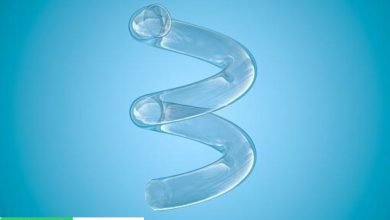A 2020 survey found that over 60% of Americans drink coffee to jumpstart their morning. There are many ways to make a cup of joe, but perhaps none are more convenient than using a Keurig machine.
Of course, you must maintain the machine to get the best results from a Keurig coffee maker. But how often should you clean your Keurig?
The following guide will explain when and how to clean Keurig machines for the best-tasting coffee possible.
In this article
How Often Should You Clean Your Keurig?
Keurig tells its customers to descale their Keurig machine once every 3 to 6 months. Doing so helps stop calcium and scale buildups from happening.
However, some parts of Keurig coffee makers need more frequent attention than others. For example, you should clean the outside of the Keurig, its cold water reservoir, drip tray, and pod holder weekly if you use the machine daily.
Frequent cleaning might sound like a pain, but regular cleaning helps Keurigs last longer and saves money on replacements. It also helps give coffee from K cups and stronger and more delicious flavor.
Signs of an Unclean Keurig
If you still can taste the last brew in your current cup of coffee, it’s time for a cleaning. You should also look for coffee grounds floating around in your cup.
Pay attention to any bad odors or mildew-like smells coming from your machine. Mold and algae build-up can make you sick if you drink it.
If the water only comes out in a slow trickle, it’s a sign that you should clean the machine. Also, keep an eye out for any visible mineral buildup on your Keurig.
Some models have a helpful descale prompt that lets you know it needs cleaning. Finally, if your cup fills slowly or it doesn’t fill completely, give your machine a thorough cleaning.
How to Clean a Keurig Machine
Start by taking apart your Keurig so that you can clean every part as much as possible. Remove the water reservoir, drip tray, lid, and holder for K cups. Wash each individual part entirely before you put the machine bask together.
First, clean the machine’s water reservoir again using soap and water. Make sure you rinse out the reservoir completely before you use the machine again or your coffee might taste like soap.
Always let the Keurig’s reservoir drip dry to stop lint from getting stuck to the sides. Any lint that sticks to the side can eventually end up in your cup of coffee.
While you wait for the reservoir to dry, clean out the needles used to penetrate K-cups every brew. To do this, use a straightened paper clip to break up any coffee grounds clinging to the needle.
Next, take a wet and soapy cloth that’s free of lint to clean the machine’s drip tray and pod holder. Wipe down the whole outside of the machine once you’ve put all the parts back together.
Descaling Methods
Scaling shows up in Keurig machines after calcium hardens and mineral deposits dry up in the water supply. If the water you use has a high mineral content, buildup happens much more quickly. It might prevent the Keurig from working correctly or at all.
Keurig has its own descaling solution that they’ve approved for 1.0 and 2.0 models. Simply turn the machine off and fill the reservoir with equal parts water and a descaling solution.
Run the machine, fill an empty coffee cup, dump out the mixture, and repeat until you empty the reservoir. Rinse out the reservoir and just like that, your machine is descaled and ready to brew a fresh cup of coffee.
You can also use white vinegar in place of Keurig’s descaling solution for a cheaper alternative. Fill half the reservoir with vinegar and the other half with water. Run the machine until the reservoir is empty and rinse it thoroughly until no vinegar remains.
You can use citric acid for another homemade descaling option. Mix 2 tablespoons of citric acid with 4 cups of water to create the solution. Then, follow the same steps as the vinegar method and Keurig’s solution.
In Between Cleanings
If you want to maintain your machine between cleanings, consider using rinse pods. You simply insert the rinse pod where you would a regular pod and brew an 8-ounce cup.
Remove the rinse pod and brew another 8-ounce cup without it to rinse out any lingering solution. The rinse pods are meant to be thrown away after use.
For homes with high levels of chlorine in the water, consider Keurig water cartridges. Replace the cartridges every 2 months or after 60 reservoir refills to keep chlorine from ruining the taste of your coffee. Buy about 6 cartridges for a whole year’s supply.
Keep in mind that sometimes cleaning isn’t enough to save a machine. If your water isn’t coming out hot, you see leaks, or the coffee taste too watery, it might be time for a new machine.
It should only take a few minutes to brew coffee, any longer and it’s a problem. After all, the purpose of K cups is speed and convenience.
Taking Care of Your Keurig
So, how often should you clean your Keurig? Deep clean your machine every 3 to 6 months (including descaling) with minor cleaning in between for the best results.
Remember this guide and get the most life out of your Keurig coffee makers and the best taste out of your K cups! Check out our site’s food section under the health tab for more ways to keep your life delicious!








